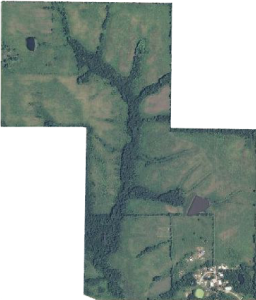Dancing Rabbit Land Trust

Dancing Rabbit’s ownership is based on the Community Land Trust model. The land is owned by a 501(c)2 non-profit that is partnered with our 501(c)3 non-profit. Our non-profits have a board of directors made up of members and non-members who steward the land and finances of the organizations while leaving the day-to-day decisions about operation of the community to the membership.
The land trust model takes land out of the speculative market while still providing an ownership-like option for our members. Each individual or household can lease a small plot of land for a monthly fee. Since we have no buy-in fee or purchase price for land, Dancing Rabbit can be an affordable option for people with a wide range of financial situations.
Leaseholders do not own their land, but do own any improvements on their land including any buildings, orchards, gardens, etc. These can be sold to another member if someone leaves the community or moves to a different leasehold. Since members can’t sell their land, there is no ability to speculate and land can be a permanently affordable resource at Dancing Rabbit.
Residential leaseholds are small, generally about a sixteenth of an acre (2500 sq-ft) per person. Homes are small and often surrounded by gardens and edible landscaping as well as outdoor social spaces. Such a leasehold costs a member about $25 per month.
For those wanting to do more extensive food production, Dancing Rabbit offers special garden and agricultural leases at a significant discount compared to its residential leases. Such leases are in designated spaces on the edge of the village, or in areas set aside to protect waterways and green spaces from building.
Each new leasehold must go through a community approval process. The community attempts to guide new members through an ecological design process to make sure they are taking into account both the needs of their household or garden and the effects it will have on their neighbors and our land. Our goal is to allow great flexibility for each member to realize their vision of a sustainable dwelling or garden while also fitting their goals into the larger design goals of the village.
